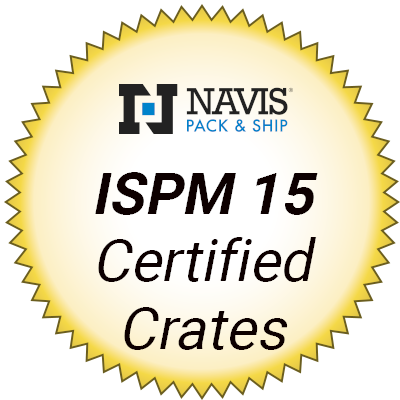We at Navis Pack & Ship like to support artists. We are bringing a three part series to the blog on creating an online portfolio for your work. Many artists create an online portfolio as both an archive of past work, and a promotional tool.
Part 1 of the series will cover the popular types of portfolios, and questions to ask yourself when deciding what format to use. Part 2 will cover popular platforms for creating portfolios, and Part 3 will cover promoting yourself online.
Some popular formats for online portfolios
Slider
With a slider you will arrow through full size images of the work, great for photographers and designers. Works well with 15 or fewer images, but is daunting for large bodies of work.
Thumbnails & Lightbox
The artist will show a grouping of thumbnails, and if you click, an image opens in an overlay. At this point you can arrow through the images as you please in the lightbox. This is great for browsing, as long as the work looks good as a thumbnail.

Michael Fehrenbach, Designer (Thumbnail view of all works)

Michael Fehrenbach, Designer (Lightbox view of one piece with caption)
Thumbnails & Links
This type of portfolio will look similar to the thumbnails & lightbox, but when you click on a thumbnail it will take you to a new page with more information about the project. This format works well for projects requiring multiple photographs, or if you would like a longer explanation next to a piece.

Digital Telepathy, Design Firm
Side Scroll
This is a trendy way to show your work, it only works for so many pieces. It can get irritating to keep scrolling for more, it is a nice way to showcase top ten to fifteen pieces however.
Sidebar Index & Full Size Images
This format includes a list of links to all work in a sidebar on the left or the right and full size images. This works well for work with descriptive titles that don't require a lot of extra explanation.
Blog Style, List
This format is generally like a blog, in chronological order, with the newest projects at the top. It works best for those looking to archive their projects, and not necessarily show off only their best work on the front and center.
Hosted
This type of portfolio is hosted on another platform, and is not on your own custom domain. Behance.net is a great example. The benefits include being part of their larger network, but the downside is having less control of the look & feel.
Things to consider when choosing a format
What type of work do you want to display?
Photographs, paintings, illustrations, sculpture, etc.
Does your work require multiple images per piece?
if yes, then consider having a page for every piece.
Do you want a small caption for every image?
Using the slider works well for this.
Does your work look cohesive?
The thumbnails can look messy together if the work varies too much.
Do all of your pieces have a unique name?
If every piece is “Untitled” then using a left hand index would get redundant.
Let us know what you think of Part 1 and stay tuned for Part 2 of our Online Portfolios for Artist Series









